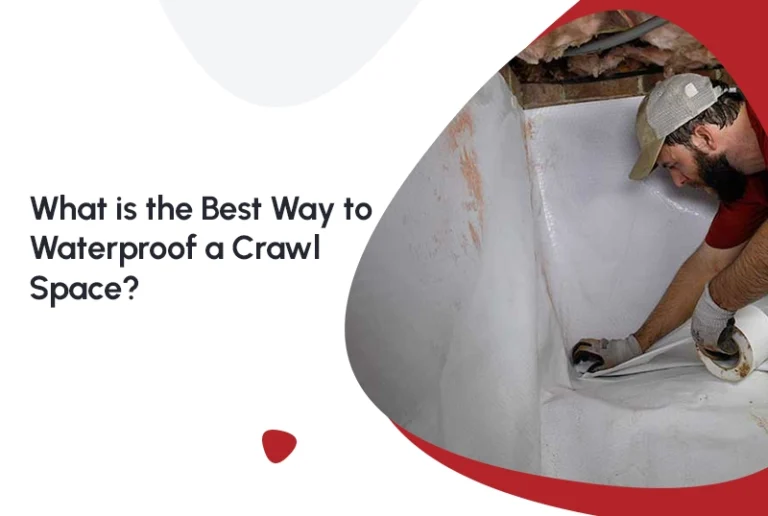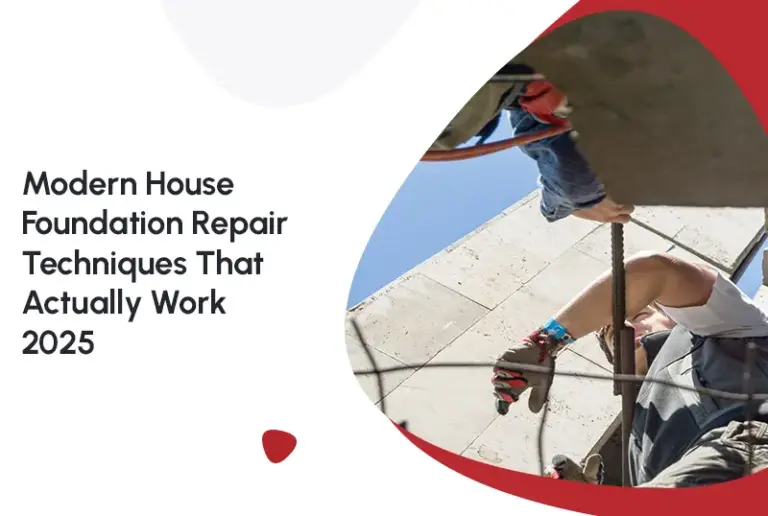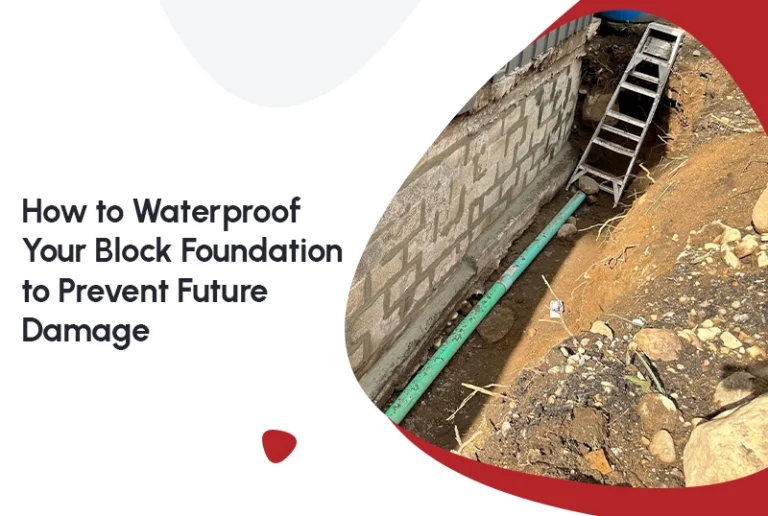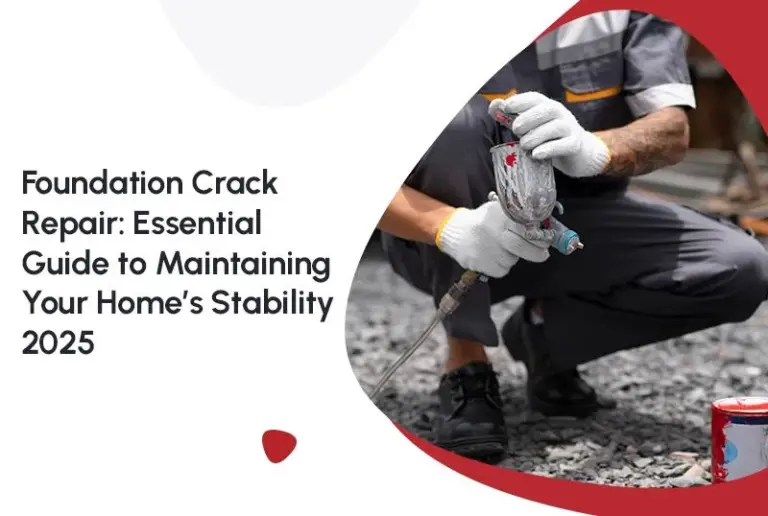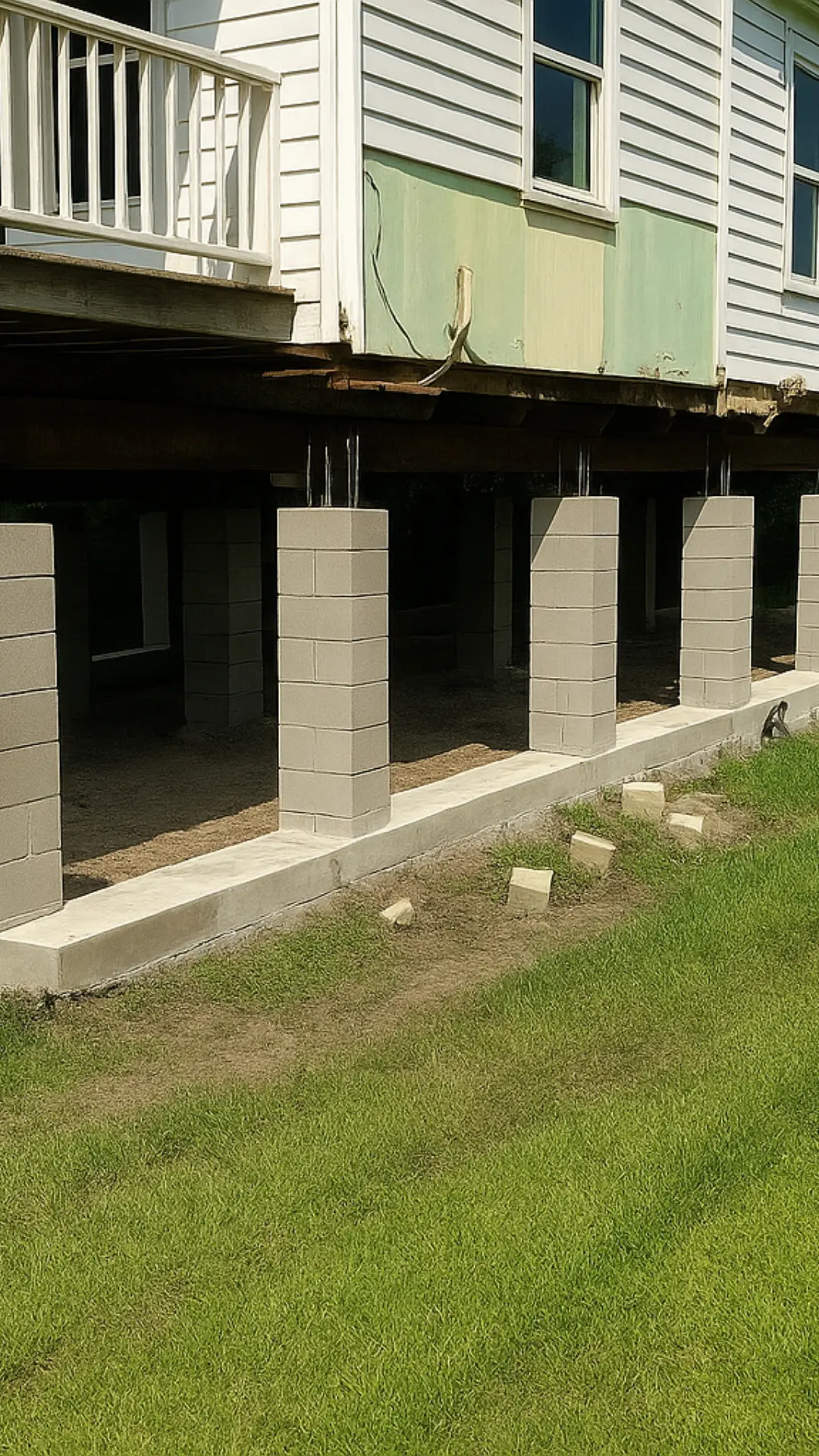When it comes to foundation repairs, homeowners are often left wondering about both the foundation repair cost and the duration of the repair process. A pier and beam foundation is a popular choice for older homes, especially in areas where moisture and soil movement are common. But, like any foundation type, it is not immune to problems. Whether your .pier and beam foundation is experiencing shifting, settling, or moisture damage, timely repair is essential to maintaining the structural integrity of your home. In this blog, we will discuss the key factors that influence the foundation repair cost and time involved in repairing a pier and beam foundation.
Understanding foundation repair cost
Before diving into the specifics of foundation repair costs and timeframes, it’s important to understand what a pier and beam foundation is and how it works. A pier and beam foundation consists of vertical piers (typically made of wood, concrete, or steel) that support beams running horizontally across the foundation. These beams, in turn, support the weight of the house. One of the key advantages of this foundation type is the crawl space it creates beneath the home, providing easy access to plumbing, electrical systems, and HVAC ducts.
However, despite these benefits, pier and beam foundations are not without their drawbacks. Over time, they may experience damage from soil movement, water exposure, and natural settling, leading to issues such as uneven floors, cracking walls, and shifting beams.
Common Causes Foundation Damage
Several factors can contribute to the damage of a pier and beam foundation, which, in turn, affect the foundation repair cost and duration:
Soil Movement
Shifting soil beneath the foundation is a common and persistent issue. Expansive clay soils, in particular, absorb water during wet seasons and contract during dry spells, causing cyclical pressure on the piers and beams. Over time, this movement can cause misalignment, sagging floors, and structural cracks. In regions with fluctuating moisture levels or improper grading, soil instability can significantly shorten the lifespan of a pier and beam foundation.
Water Damage
Excess moisture from poor drainage, flooding, leaking gutters, or broken pipes can wreak havoc on pier and beam foundations. When water seeps into the crawl space, it creates a damp environment that promotes wood rot, rusting of metal components, and the growth of mold and mildew. Over time, this dampness can weaken wooden beams and compromise the load-bearing capacity of the piers. In some cases, water damage also attracts pests like termites, which further deteriorate the wood.
Aging Materials
Like any structural component, the materials used in pier and beam foundations degrade over time. Wooden piers, in particular, are vulnerable to decay, insect damage, and moisture exposure. As these materials weaken, the foundation begins to lose its ability to support the weight of the home evenly. Beams may also sag or warp, resulting in bouncy or uneven floors, creaky boards, and other signs of foundation distress. Homes that are several decades old are especially prone to these issues if routine maintenance has been neglected.
Improper Installation
Sometimes, foundation issues stem from construction shortcuts or errors made during the original installation. Inadequate spacing between piers, improper footing depths, or substandard materials can all contribute to early foundation failure. If the foundation was not designed to handle the specific soil conditions or the load of the home, it can become unstable far sooner than expected. Improper installation not only accelerates wear and tear but also complicates future repair efforts, often requiring more extensive intervention. Sometimes, foundation issues arise from poor initial construction or improper installation of the pier and beam system.
How Much Does Foundation Repair Cost?
The foundation repair cost of repairing a pier and beam foundation depends on a variety of factors, including the extent of the damage, the materials used, and the location of your home. Generally, you can expect to pay between $2,000 and $7,000 for minor repairs, and $7,000 to $15,000 or more for more extensive damage. Here are the key elements that contribute to the overall foundation repair cost:
Inspection and Assessment
The first day will typically be spent on inspection, where the contractor assesses the damage and prepares a detailed plan for the repair. This may include determining the number of piers that need replacement, the extent of beam reinforcement, and whether any soil treatment is required.
Type of Repair Needed
- Pier Replacement: If piers have rotted or shifted, replacing them will be necessary. The foundation repair cost of installing new piers typically ranges from $1,000 to $3,000 per pier, depending on the material used.
- Beam Replacement or Reinforcement: Replacing or reinforcing the beams may cost between $3,000 to $6,000, depending on the materials and the size of your home.
- Crawl Space Maintenance: In some cases, improving the drainage in the crawl space may also be necessary. The cost of installing a vapor barrier or drainage system can add $1,000 to $3,000 to the overall price.
Material Costs
The materials used in the repair process will also affect the total foundation repair cost. Concrete piers are typically more expensive than wood piers, but they tend to offer longer-lasting results. Additionally, the cost of replacing beams or adding reinforcements may vary depending on whether you choose wood, steel, or other materials.
Labor Costs
Labor costs are a significant portion of the repair expenses. The complexity of the job and the number of workers required can affect the price. On average, labour for foundation repair costs range from $50 to $150 per hour.
How Long Does foundation repair cost Take?
The duration of the repair process can vary based on the severity of the damage and the methods used. On average, pier and beam foundation repair takes anywhere from 2 to 5 days, although it could take longer if the damage is extensive. Here’s a breakdown of the stages involved:
- Inspection and Assessment (1 Day)
The first day will typically be spent on inspection, where the contractor assesses the damage and prepares a detailed plan for the repair. This may include determining the number of piers that need replacement, the extent of beam reinforcement, and whether any soil treatment is required. - Shoring and Stabilization (1 Day)
In some cases, the contractor will need to stabilize the structure before beginning the repair process. This step often involves shoring up the house to prevent any further shifting or damage during the repair. This process may take a day or more, depending on the size of your home. - Pier and Beam Replacement (1-3 Days)
The core of the repair work involves replacing damaged piers and beams. If multiple piers need to be replaced, this could take 2 to 3 days, depending on accessibility and the extent of the damage. - Crawl Space Maintenance and Final Adjustments (1 Day)
Once the piers and beams are in place, contractors will complete any necessary crawl space maintenance, such as installing vapor barriers or improving drainage. Afterward, they’ll finalize the leveling of your foundation, ensuring that the house is stable and properly supported.
Signs You Need Pier and Beam Foundation Repair
Homeowners should be proactive about identifying signs of foundation failure before the damage worsens. Watch for these red flags:
- Sagging or bouncy floors
- Cracks in walls, especially above windows and doors
- Doors and windows sticking or not latching
- Gaps around the baseboards or ceiling
- Musty odors from the crawl space
Why You Should Consider Concrete Slab Foundation Repair
In some cases, homeowners with pier and beam foundations may choose to convert their foundation to a concrete slab foundation. This could be due to concerns about the longevity of their current foundation or because a slab foundation is less prone to moisture-related issues. Concrete slab foundation repair cost is often less expensive in the long run since it requires fewer maintenance interventions, and the repair process is generally quicker and less invasive.
Benefits of Timely Foundation Repair
- Prevents Further Damage: Addressing foundation issues early can prevent more serious and costly problems down the road. Foundation problems can lead to structural instability, causing walls to crack, floors to sag, and plumbing to fail.
- Protects Home Value: Timely repairs help maintain the value of your home. A well-maintained foundation ensures that your home remains structurally sound, preserving its market value.
- Improves Home Comfort: Foundation issues can cause uneven floors and air gaps in your home. By fixing these problems, you improve your home’s comfort, safety, and energy efficiency.
Advantages of Concrete Slab Conversion:
- Less susceptible to water damage
- Reduced maintenance of crawl space
- Increased thermal mass and insulation
- Fewer pest entry points
However, this conversion can be costly and is usually only recommended in severe cases.
Preventive Measures to Extend Foundation Life
You can avoid foundation repair costs in the future by implementing smart maintenance practices today:
- Improve Drainage: Ensure gutters and downspouts direct water away from the foundation.
- Install a Sump Pump: If flooding is an issue, a sump pump will prevent water buildup.
- Use a Vapor Barrier: Keeps moisture out of the crawl space.
- Seal Cracks Early: Minor cracks can grow fast if left untreated.
- Inspect Regularly: Twice a year is ideal—before summer and winter.
Conclusion
Repairing a pier and beam foundation is a crucial step in maintaining the structural integrity of your home. While pier and beam foundation repair cost can vary depending on the extent of the damage and the materials used, addressing the issue promptly will help you avoid more expensive foundation repair costs down the line. It’s essential to hire a reputable foundation repair company to ensure the work is done correctly and efficiently. Keep in mind that while the pier and beam foundation repair process may take a few days, the benefits of having a stable, secure foundation are well worth the investment.
FAQs
1. How long will a cracked foundation last?
A cracked foundation can last for years if the cracks are minor and not structural, but the lifespan shortens significantly if the problem is left untreated. Small hairline cracks caused by natural settling may not worsen quickly, but structural cracks—especially horizontal or widening ones—can spread and compromise your home’s integrity. Acting early with sealing, reinforcement, or pier installation ensures the foundation remains stable and prevents the need for costly future repairs.
2. How do I stop my foundation from cracking?
Preventing foundation cracks begins with moisture control and proper drainage. Ensure that your gutters and downspouts direct water at least six feet away from the home. Water the soil around your foundation during dry seasons to maintain consistent moisture levels and prevent expansion or shrinkage. Additionally, avoid planting large trees too close to your home, as their roots can disturb the soil and cause uneven settling.
3. How much does foundation repair cost on average?
On average, foundation repair costs between $2,000 and $7,500, depending on the damage severity and repair method. Small cracks or minor settling may only cost a few hundred dollars, while major structural issues requiring piers or underpinning can exceed $10,000. Homes built on expansive clay soils often need more complex repairs. Scheduling regular inspections and addressing problems early helps minimize costs.
4. What type of foundation repair is most expensive?
The most expensive type of foundation repair is underpinning or pier installation, which can cost between $10,000 and $30,000. This method is used for homes with severe settling or structural instability. It involves driving steel or concrete piers deep into the ground to support and lift the foundation. Although costly, it’s often a permanent solution that restores structural balance and prevents further movement.
5. What type of foundation repair is best?
The best type of foundation repair depends on the extent of damage and soil conditions.
- Concrete piers are ideal for homes with heavy structures or deep foundation problems.
- Steel piers offer superior strength and are suited for expansive soils.
- Helical piers work best for lighter structures or where access is limited.
Each method provides durable stabilization, but professional assessment is essential to select the most effective solution for your property.
6. How long will foundation repair last?
A properly executed foundation repair can last a lifetime, often backed by transferable warranties of 25 years or more. Longevity depends on the repair method, material quality, and ongoing maintenance. For instance, steel piers and helical piles offer permanent stabilization, while minor crack repairs may require re-inspection after several years. Good drainage and soil moisture control are key to ensuring repairs remain effective long-term.
7. What is the cheapest way to repair a foundation?
The cheapest way to repair a foundation depends on the issue. For small cracks, epoxy or polyurethane injection kits are an affordable option and can often be done without major excavation. For minor settling, mudjacking or slabjacking—injecting material under the slab to lift it—offers a cost-effective alternative to full replacement. However, cutting costs on severe issues can backfire, so it’s best to consult a professional before choosing the cheapest route.
8. How long will a cracked foundation last?
A cracked foundation can last several years if the damage is minor and doesn’t affect structural integrity. However, untreated cracks can expand over time, leading to uneven floors, sticking doors, or water infiltration. The lifespan depends on how quickly the issue is addressed. Prompt sealing and reinforcement can extend the life of a cracked foundation by decades, while neglect can shorten it dramatically.
9. What happens if you don’t fix foundation cracks?
If foundation cracks are left unrepaired, they can worsen with time, allowing water seepage, mold growth, and structural instability. As soil movement continues, the cracks may widen, causing walls to bow and floors to slope. Eventually, this can lead to costly repairs or even foundation replacement. Fixing small cracks early is far less expensive and helps preserve the overall safety and value of your home.
10. Is it true that all foundation cracks are serious?
No, not all foundation cracks are serious. Hairline cracks often result from normal settling and don’t pose structural risks. However, horizontal, wide, or stair-step cracks may indicate significant foundation movement or pressure from surrounding soil. The key is monitoring their growth—if cracks widen or allow water intrusion, you should have them professionally inspected and repaired to prevent future damage.

